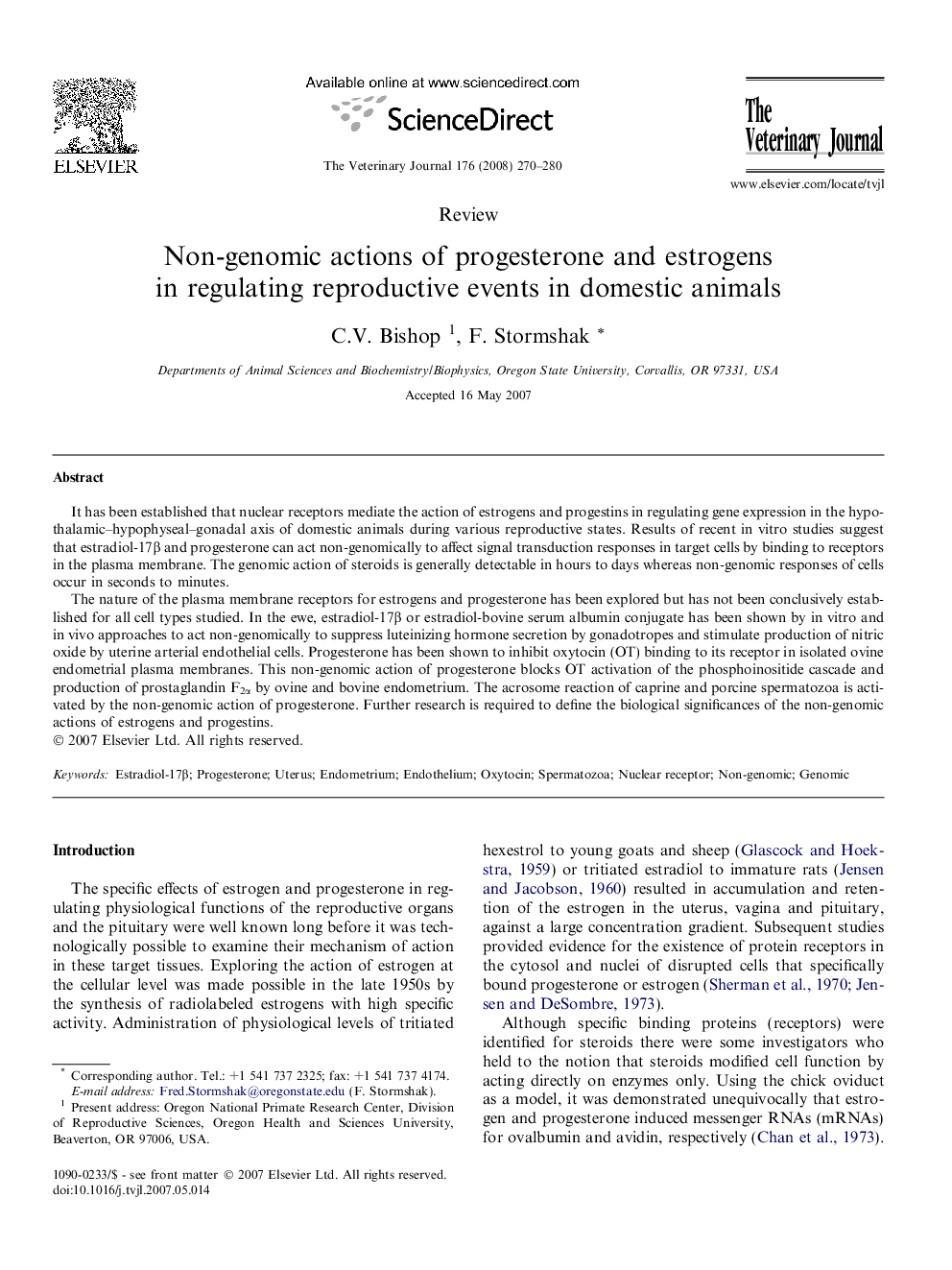| Article ID | Journal | Published Year | Pages | File Type |
|---|---|---|---|---|
| 2466218 | The Veterinary Journal | 2008 | 11 Pages |
It has been established that nuclear receptors mediate the action of estrogens and progestins in regulating gene expression in the hypothalamic–hypophyseal–gonadal axis of domestic animals during various reproductive states. Results of recent in vitro studies suggest that estradiol-17β and progesterone can act non-genomically to affect signal transduction responses in target cells by binding to receptors in the plasma membrane. The genomic action of steroids is generally detectable in hours to days whereas non-genomic responses of cells occur in seconds to minutes.The nature of the plasma membrane receptors for estrogens and progesterone has been explored but has not been conclusively established for all cell types studied. In the ewe, estradiol-17β or estradiol-bovine serum albumin conjugate has been shown by in vitro and in vivo approaches to act non-genomically to suppress luteinizing hormone secretion by gonadotropes and stimulate production of nitric oxide by uterine arterial endothelial cells. Progesterone has been shown to inhibit oxytocin (OT) binding to its receptor in isolated ovine endometrial plasma membranes. This non-genomic action of progesterone blocks OT activation of the phosphoinositide cascade and production of prostaglandin F2α by ovine and bovine endometrium. The acrosome reaction of caprine and porcine spermatozoa is activated by the non-genomic action of progesterone. Further research is required to define the biological significances of the non-genomic actions of estrogens and progestins.
